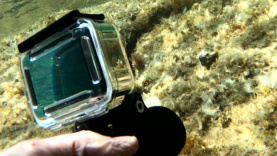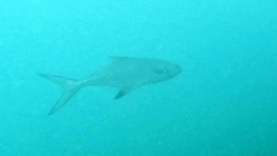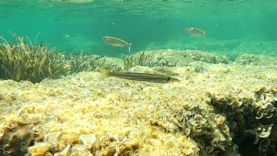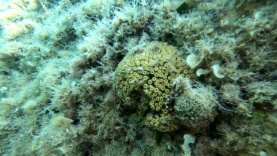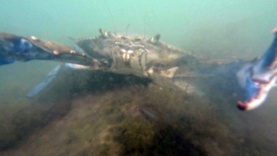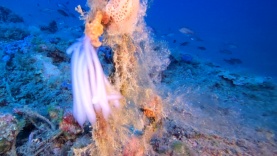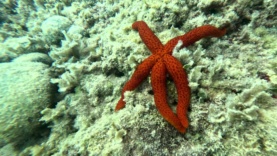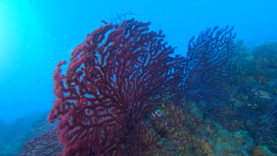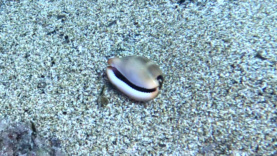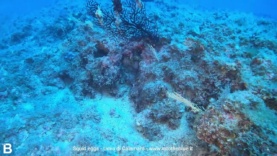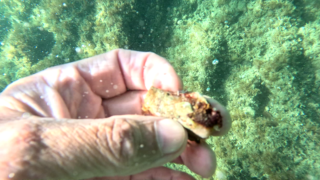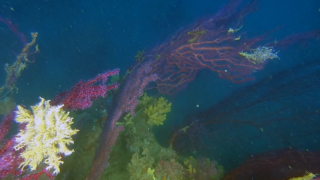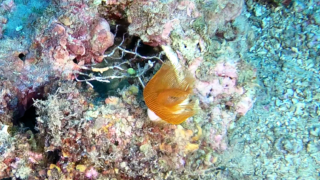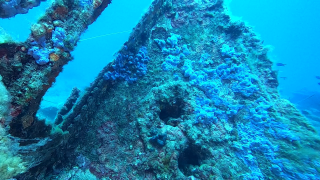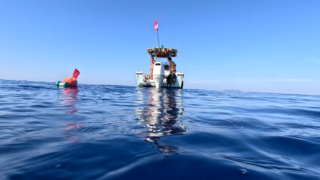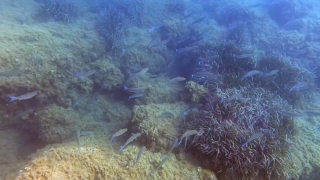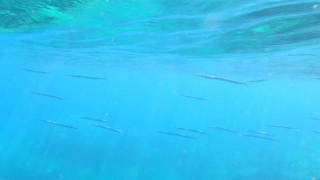Squid eggs
In these two different dives at a depth ranging from about 40 to 50 meters, we filmed the eggs of the European squid (Loligo vulgaris) laid in completely different ways. Squid eggs Uova di Calamaro www.intotheblue.it
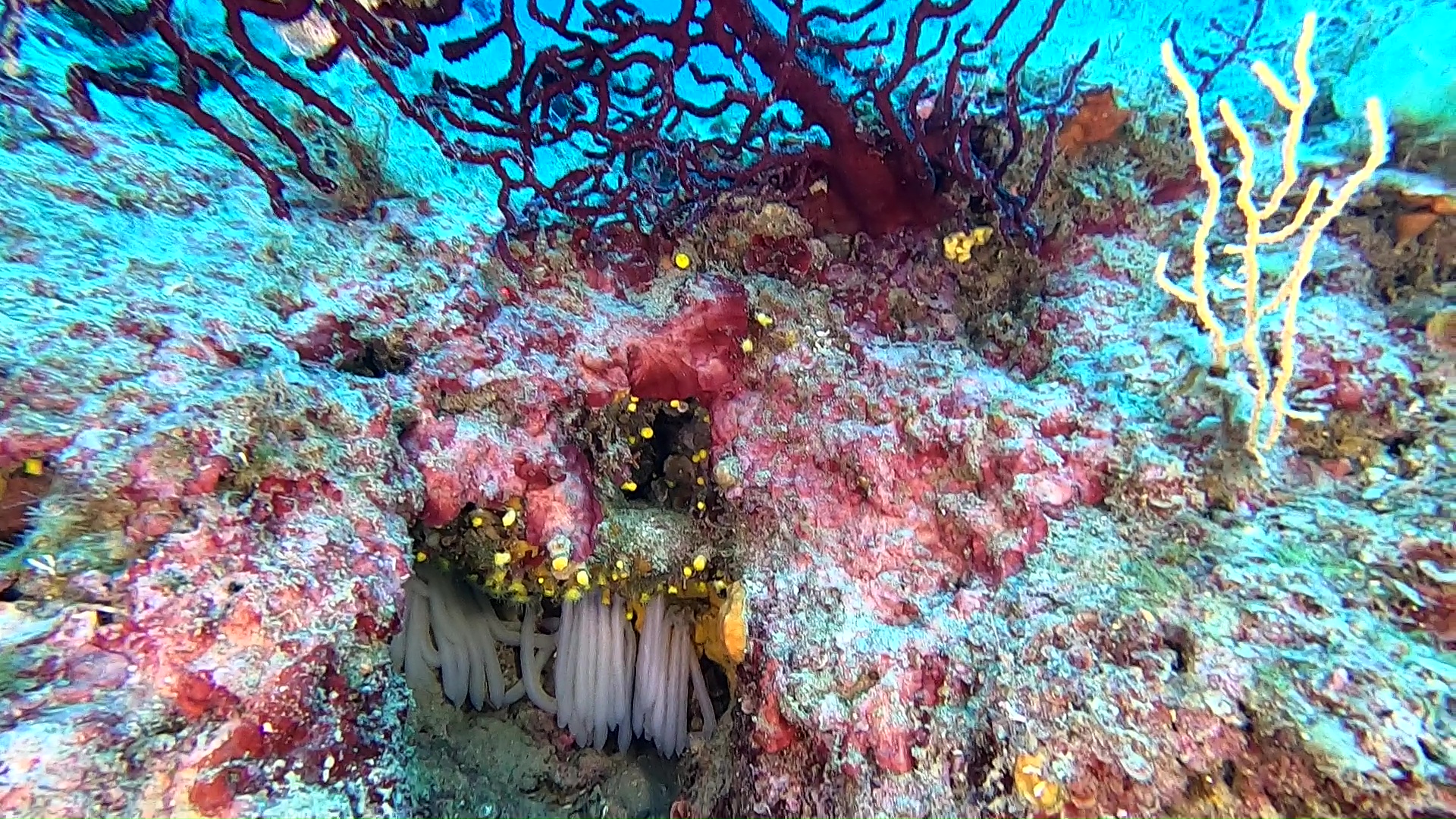
In the first dive we found them in what would appear to be the optimal situation, i.e. in a hole near the red Gorgonian (Paramuricea clavata), therefore certainly in an area where a constant flow of current and therefore oxygenation is guaranteed.
In the second dive instead we witness how marine organisms adapt to extreme situations where the impact of man interferes with the natural environment and the ecosystem, modifying the various habitats. In this case, in fact, the eggs were laid around the now sadly omnipresent “ghost net“, i.e. the classic gillnet or trammel net caught on the cliff and abandoned because it was impossible to set sail. Now whether it’s good or bad, future generations of squid will tell us, if they make it to hatch and thrive! the certain fact is that by now these situations are more and more frequent in the depths of the whole planet.
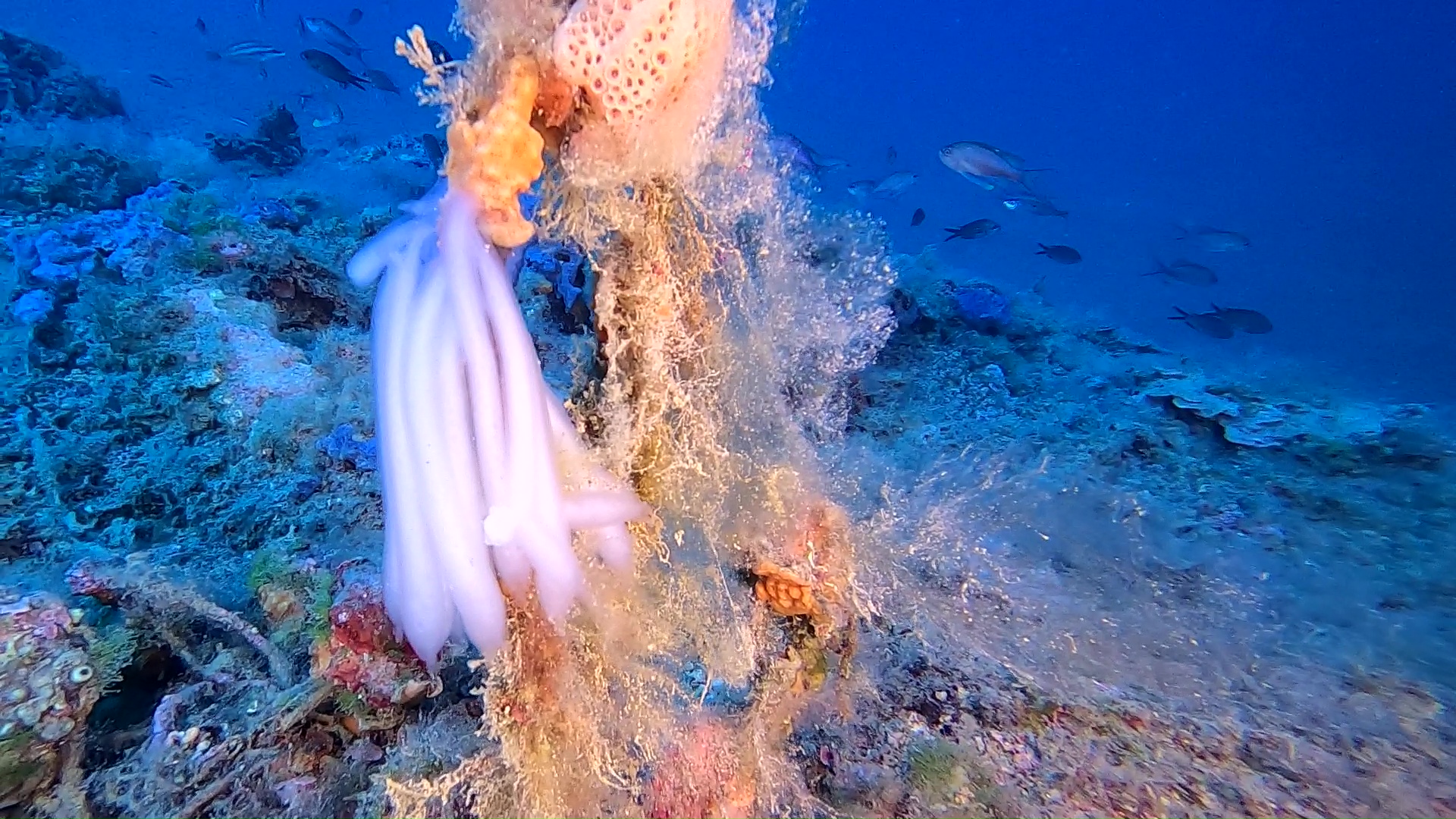
We leave it to you to judge whether we can continue to ignore unsustainable fishing methods and materials such as nylon fishing nets, which will remain on the seabed for several years and decades once caught, or switch totally towards biodegradable and sustainable materials, such as in hemp that were once used, rather than going so far as to ban certain types of fishing in order to safeguard our sea.
https://it.wikipedia.org/wiki/Loligo_vulgaris
Gallery

